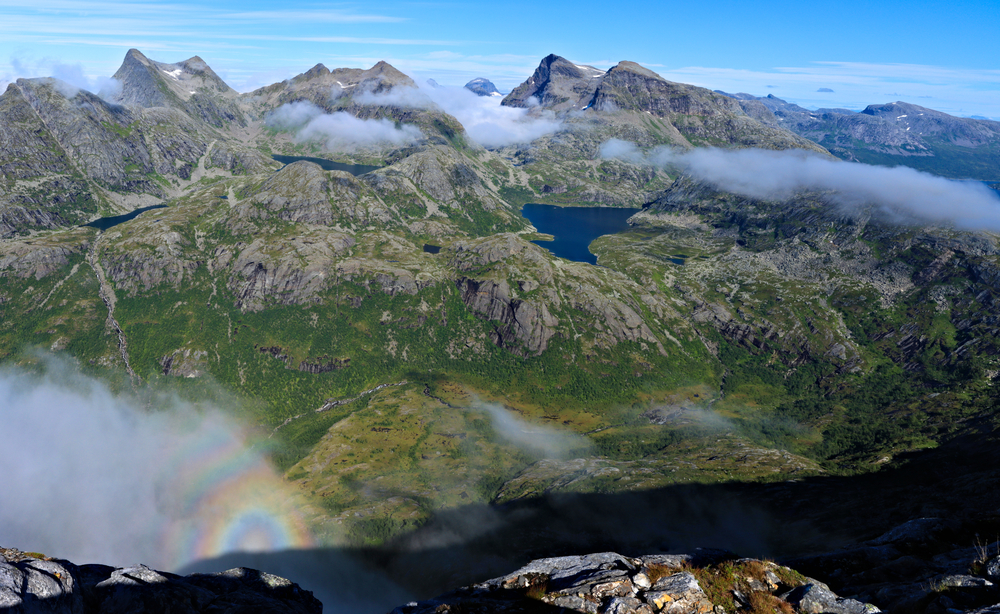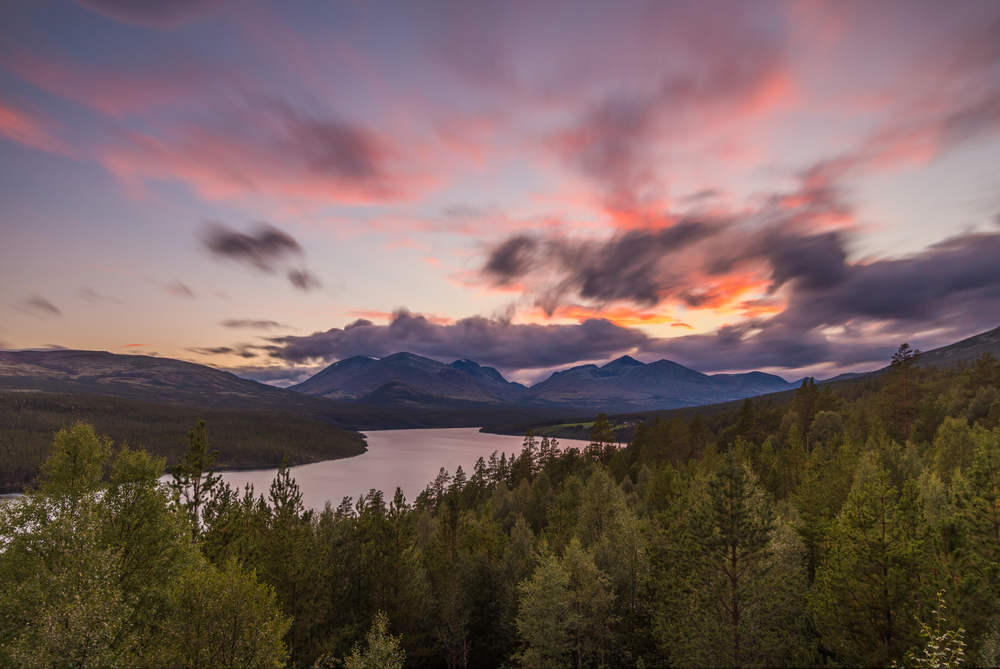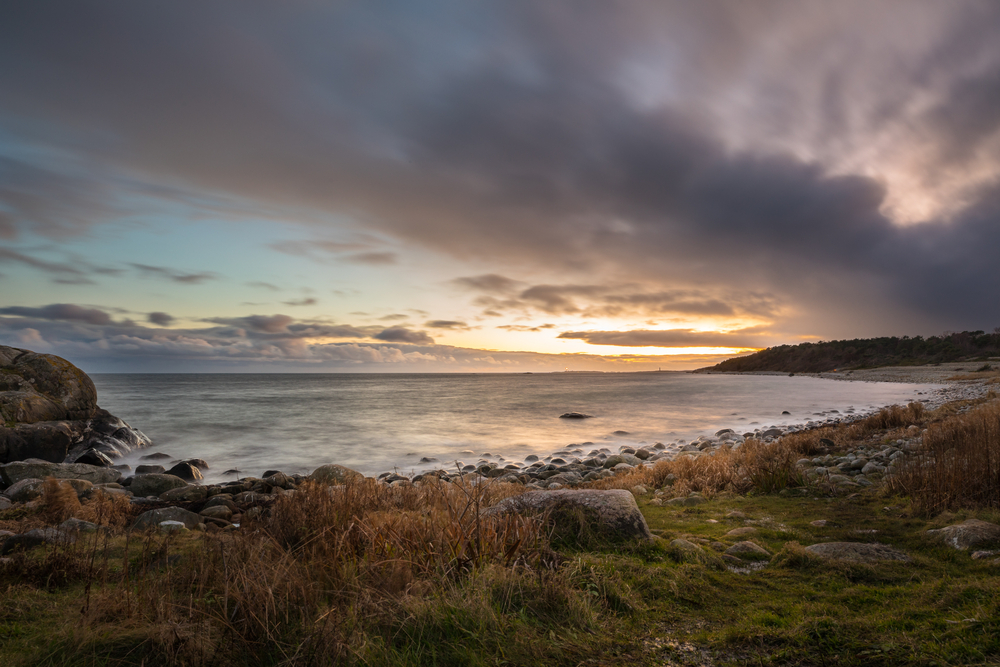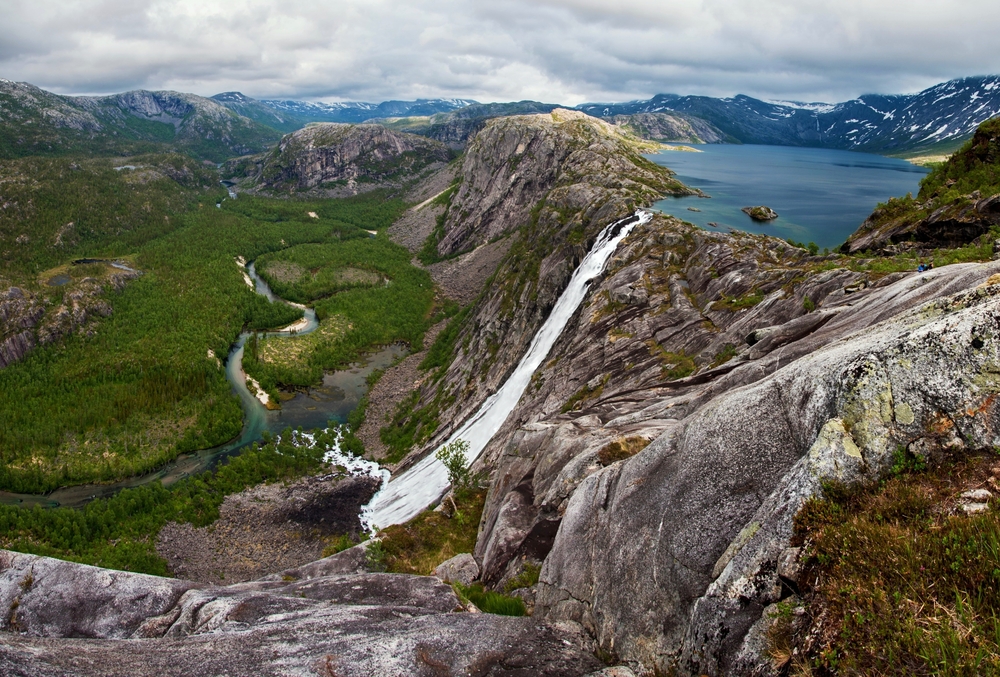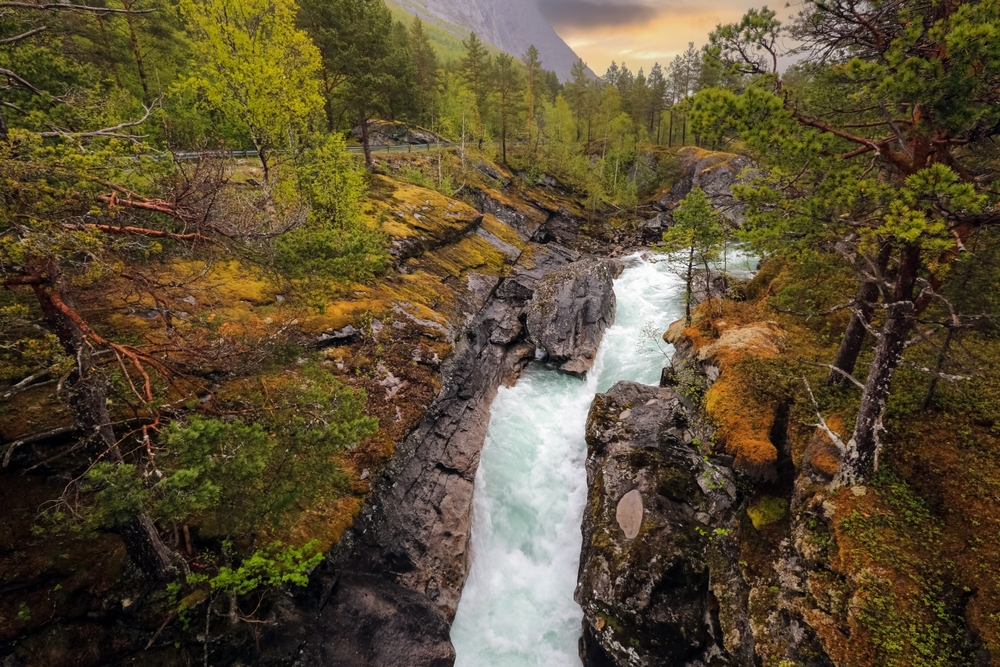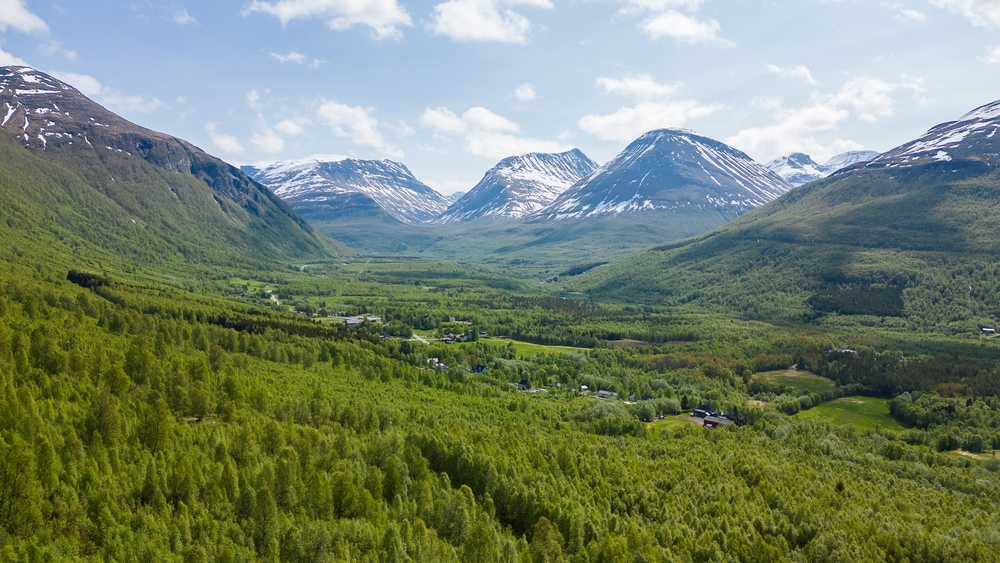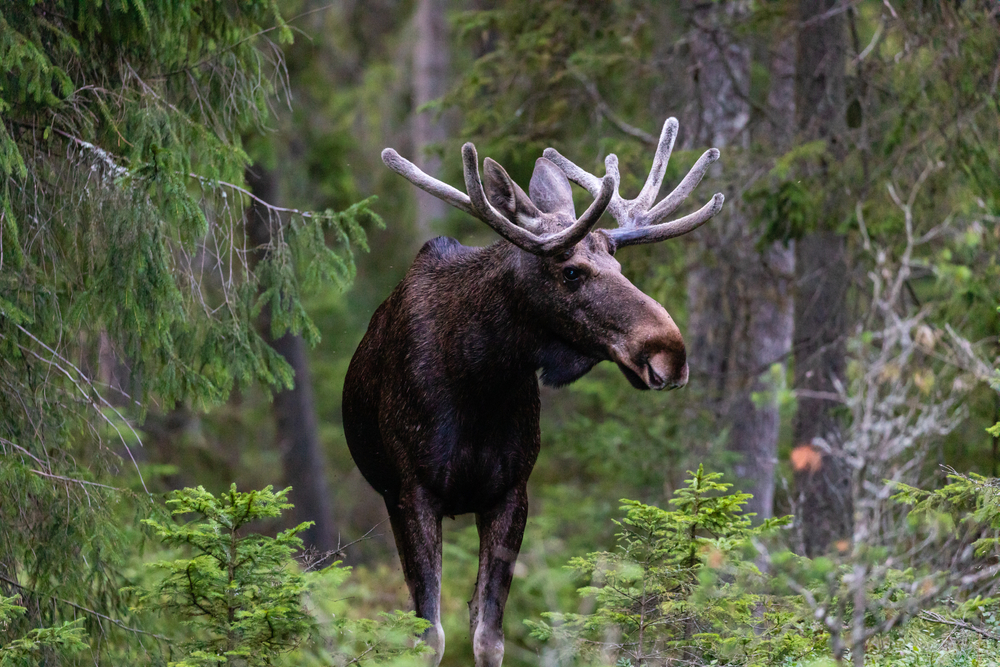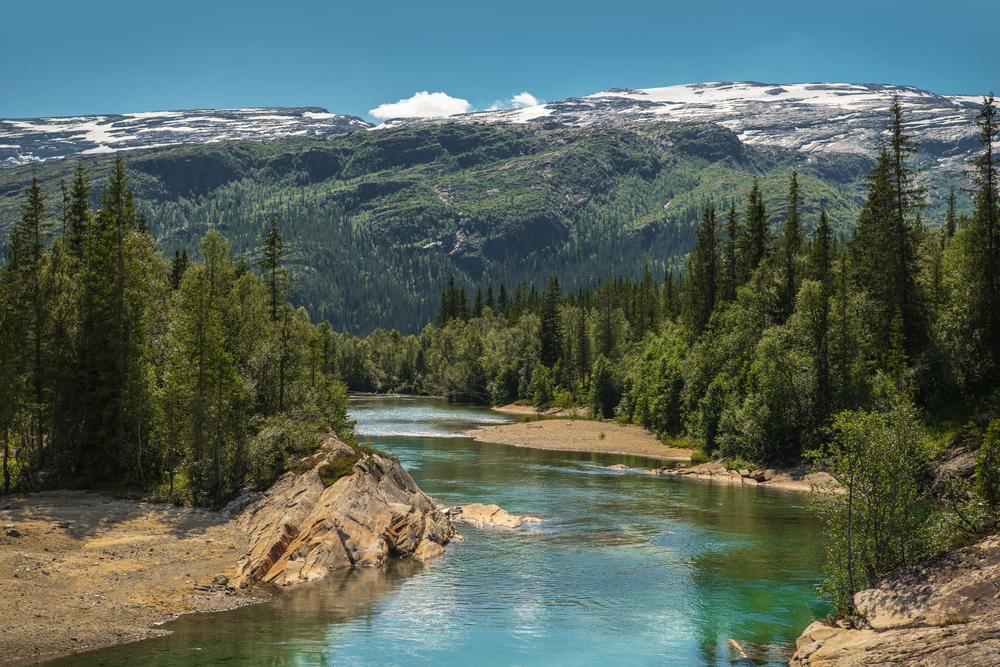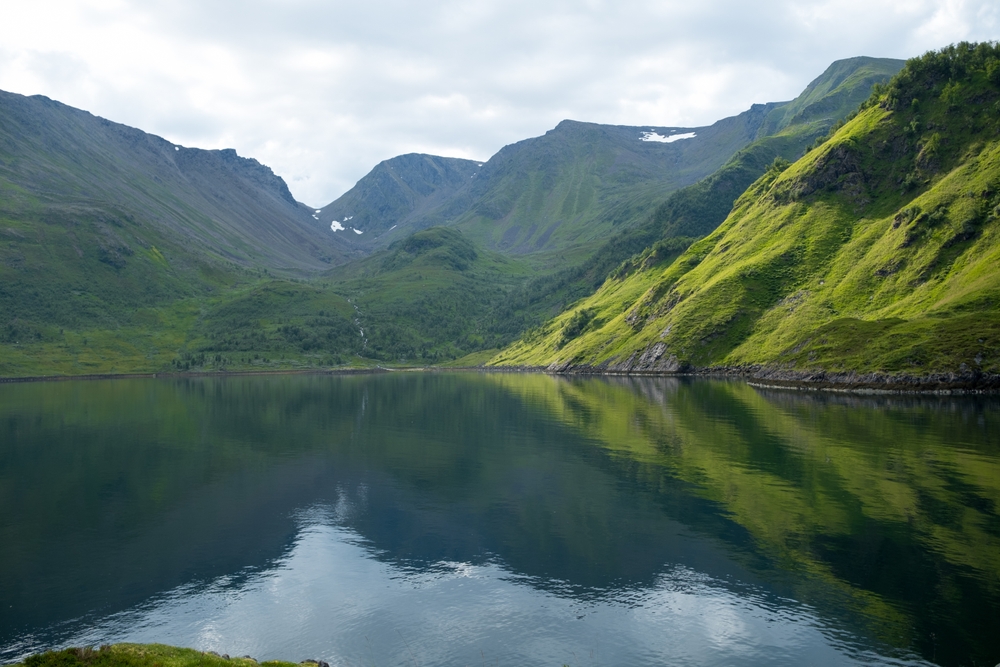Sjunkhatten Overview
Sjunkhatten National Park, known as Sjunkhatten nasjonalpark in Norwegian, is a remarkable protected area located in Nordland County, Norway.
Covering approximately 159 square miles (411 square kilometers), the park is situated near the municipalities of Bodø, Fauske, and Sørfold, offering a diverse and rugged Arctic landscape. Established in 2010, it is often referred to as a “children’s national park” due to its family-friendly accessibility and emphasis on outdoor education for young explorers.
The park’s remote and pristine environment provides visitors with an opportunity to experience northern Norway’s stunning natural beauty, with fjords, alpine mountains, and coastal terrain shaping the park’s identity.
Sjunkhatten National Park features a diverse and dramatic topography, shaped by glacial activity over millennia. The landscape is dominated by steep mountains, deep fjords, and wide valleys, creating a breathtaking mosaic of natural features. Sjunkhatten Mountain, from which the park derives its name, stands prominently as a key landmark, its rugged slopes offering a challenge to hikers.
The park also includes multiple glacial lakes, such as Heggmoen and Vatnvatnet, which reflect the surrounding peaks in their clear waters. The coastline along the park’s northern edge is marked by inlets and rocky shores, adding to the varied terrain.
The vegetation ranges from boreal forests of birch and pine at lower elevations to alpine tundra higher up, where hardy mosses and lichens thrive. The changing seasons bring striking contrasts to the landscape, with lush greenery in summer and snow-covered peaks in winter.
The wildlife in Sjunkhatten National Park is emblematic of Arctic and subarctic ecosystems, with species well adapted to the harsh conditions. Among the most notable mammals are the moose, red fox, and wolverine, while smaller mammals such as mountain hares and voles are also present.
The region is particularly known for its birdlife, attracting birdwatchers eager to spot species such as white-tailed eagles, ptarmigans, and various seabirds along the coastal areas. The fjords and lakes within the park provide habitats for fish such as Arctic char and trout, making them popular among anglers. Due to its remote location, some of Norway’s more elusive predators, including lynx, can occasionally be found in the park’s dense forests.
Visitors to Sjunkhatten National Park have a wealth of outdoor activities to choose from, with hiking being one of the most popular ways to explore its diverse landscapes. Trails of varying difficulty lead through forests, along fjords, and up to panoramic viewpoints that offer breathtaking vistas.
In winter, the park transforms into a snowy wonderland, drawing cross-country skiers and snowshoers eager to navigate its pristine terrain. Kayaking along the fjords provides an up-close perspective of the park’s dramatic coastline, while fishing is a common pastime in its lakes and rivers.
Wildlife photography and birdwatching are also favored activities, with opportunities to capture Norway’s northern wilderness in its rawest form. The park’s emphasis on being a “children’s national park” means that many trails and activities are designed with young adventurers in mind, making it an inviting destination for families.
One of the key conservation challenges in Sjunkhatten National Park is balancing increasing tourism with environmental protection. While Norway places a strong emphasis on preserving its natural landscapes, human activity, particularly in fragile alpine and coastal ecosystems, poses a risk to wildlife and vegetation.
The park’s management focuses on sustainable tourism practices, ensuring that visitors follow guidelines to minimize their impact on the environment. Climate change also presents a challenge, affecting local wildlife populations and altering the natural dynamics of the region. However, conservation efforts have been largely successful, with careful monitoring of ecosystems and habitat restoration programs helping to maintain the park’s pristine condition.
The designation of the park as a protected area has played a crucial role in safeguarding its biodiversity, ensuring that future generations can continue to experience the unspoiled beauty of Sjunkhatten.








































































